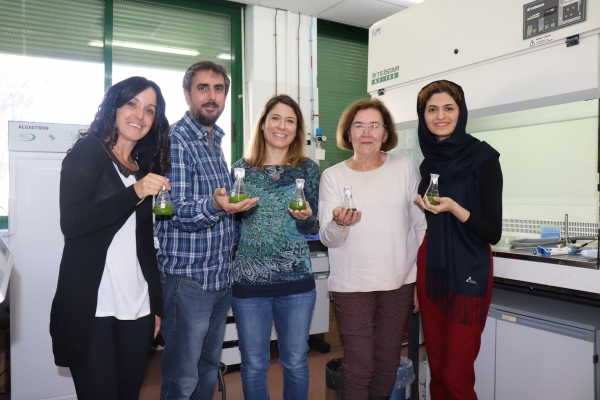Everyone knows that water is a scarce and fundamental asset for life on Earth. According to the United Nations, if modes of production and consumption patterns do not change, two thirds of the world population will live in countries with water crises by 2025. Taking this situation into account, which is further aggravated by the lack of rainfall, science is running a race against the clock to design new ways of using, cleaning and reusing waste and polluted water.
According to the United Nations Food and Agriculture Organization (FAO), agriculture and livestock are the primary activities that contaminate water, by discharging pollutants such as nitrates and phosphates. Industrial livestock production, particularly, contaminates ground and surface water and rivers through the management of livestock waste.
The decontamination systems for this type of water, essential for the reutilisation of this scarce resource, often employ certain chemical processes that do environmental damage. With the aim of reducing this negative impact, the WABA Research project, in which the BIO-128 research group at the University of Cordoba participates, is working on a way to decontaminate wastewater in rural areas that, instead of using pollutant chemicals, employs a much greener and cheaper alternative system: a combination of algae and bacteria.
The project, on which five partners from Spain, France and Morocco are participating, is based on bioremediation: a process that uses microorganisms for purification. But, why these two organisms in particular?
First, because of their ability to use contaminants as nutrients. And, as the project's director, Alexandra Dubini indicates, they do not compete for the same nutrients; in fact, just the opposite can happen. Her research group recently discovered that certain types of algae and bacteria complement each other by exchanging carbon and nitrogen, a symbiosis that allows them to survive in environments where they could not survive on their own.
This association between decontaminating bacteria and algae also generates biomass, organic matter that, far from being wasted, could be put to specific uses.
This is precisely where the second stage of the project comes in, which tries to take advantage of this raw material to produce biofertilisers, organic compounds that naturally favour nutrition and plant growth. "The tests we have done with tomatoes indicate that this biomass helps the plant to grow," says Dubini. This organic matter might someday replace the chemical products that are used as fertilisers, with the consequent damage to the environment that this entails.
The project accords with the concept of the Circular Economy, according to which the exploitation of waste is maximised in order to complete a circle based on the environmentally sound creation, use and disposal of resources. In this particular case, algae and bacteria are used as decontamination tools, and the organic matter generated as a result of this process is used as a fertiliser for the soil. There is, in short, a two-fold ecological benefit, since the use of chemical products is averted, both in the process of water decontamination and in the defabrication of fertilisers.


